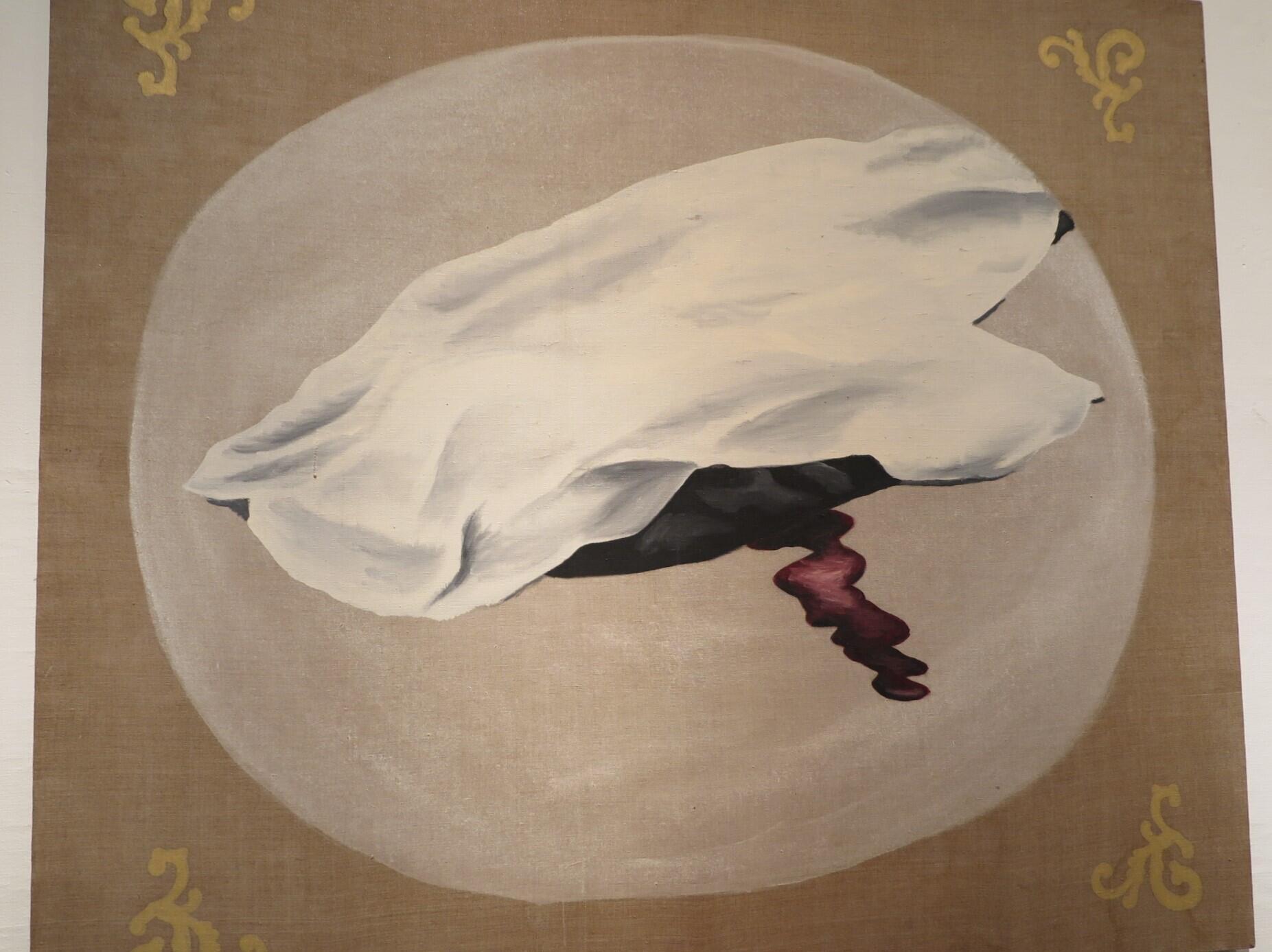
‘The Facets of Freedom’ exhibition at the Ukrainian Cultural Centre in Paris is an ode to liberty consisting of works evacuated to France from Ukraine in extremis following the Russian invasion.
The Ukrainian Cultural Centre in Paris recently opened its doors to visitors for a preview of ‘The Facets of Freedom’ exhibition (open to the public from January 19 to March 3). The works displayed "are a manifestation of freedom, whether it be creative, physical, intellectual, sexual or emotional", said Viktoria Gulenko, the centre’s director.
As the velvety notes of Beethoven’s ‘Moonlight Sonata’ accompanying a video display drifted in from an upstairs alcove, visitors peered at the works from the private collection of Tetiana and Boris Grynyov. But while the individual pieces evoked notions of liberty, the collection itself was a piece of a larger picture – that of the mad dash of cultural workers across Ukraine to evacuate artwork after Russia's invasion in February of last year.
“The challenge for us was transporting the collections. It was our personal responsibility to save everything possible. We represent different regions and we had different experiences during the war depending on whether we were in Kyiv, Odesa or Kharkiv,” said Oksana Barshynova, deputy director of the National Art Museum of Ukraine, during a round table discussion with several other art curators and collectors.
For the deputy director, the war in Ukraine did not start in 2022. It began in 2014 when Russia seized Crimea. After Russia annexed the Crimean peninsula, Interpol, the international police organisation, announced it was searching for 52 paintings by Ukrainian artists that Russians illegally transferred to the Simferopol Art Museum in March 2014.
“Ukrainians began thinking about how to rescue art as early as 2014 but we faced numerous difficulties,” said Barshynova. Ukraine, with its 3,500 museums overseen by local, regional or national entities, has a disparate system. Many museums lacked online inventories of their collections. With the government on a war footing, many arts professionals had to act on their own initiative to protect the country’s valuable art.
'There was never enough scotch tape'
For Maryna Konieva, art historian and a conservator of the Grynyov Art Collection in Kharkiv, finding packing materials for the art was a challenge. There was never enough scotch tape because it was used to cover shattered windows. Personnel was hard to find because “we needed to find people willing to work under constant fire”, she said. Konieva also remembered wrapping up an exhibition dating from the Soviet era in carpets, “because that is all we had”.
Barshynova recalled the evacuation of icons from the National Art Museum of Ukraine: “Thankfully we had packing material” and “because of our cooperation with the ministry of culture, we had access to a bulletproof train on the Ukrainian National Railway,” she said. Russians fired shots on the train during the nerve-wracking 12-hour long journey but the train’s armour saved the collection.
Dressed in a black and yellow vyshyvanka, a traditional Ukrainian embroidered shirt, art collector Tetyana Hrynyova had her own particular experience with her collection. “It was the Russian bombing and aerial attacks that incited us to leave Kharkiv,” she said. She went on to explain that her collections were stored in ordinary buildings. After a nearby building was bombed and her windows were shattered, she knew it was time to evacuate.
“We did not have an armored vehicle but we managed to evacuate our collection because we left discretely,” said Hrynyova. “I am part of a club of private collectors and we have been discussing what we would do in the worst-case scenario since 2014. Private collectors are always ready to save their collections but no one ever knows how they will react when faced with this kind of situation.”
Maria, or “Masha”, Tseloieva, an art commissioner from Odesa, remembered “being mobilized” on February 24 and 25 to evacuate pieces from the Odesa National Fine Arts Museum. She had recently ended her contract after being an employee since 2018 but the museum urgently needed specialists to pack the pieces.
She joked with her colleagues about “there being no such thing as an ex-museum employee because they could all be deployed at any time in the name of culture”. Everyone was cheerful as they packed the pieces; Masha attributed this to the fact that the inhabitants of Odesa are typically joyful.
Successful scramble
In the airy, high-ceiling room at the Ukrainian Cultural Centre, the pieces from the Grynyov family collection were a testament to the scramble to save Ukrainian art. Calm and seemingly possessed with an eternal patience, Tetiana Hyrnyova walked from piece to piece, explaining its meaning and answering questions.
In a work by Evgeniy Pavlov dated 1970-1990, a black and white photo of a nude male flying in the sky was superimposed above a coloured photo of a crowd carrying Soviet Union flags during an International Workers’ Day parade. “This can be interpreted as a manifestation of sexual freedom,” said Hrynyova. The photo taken in 1970 was not printed until 1990 because of its subversive nature under the Soviet Union.
In another piece, titled “Killed Dream” by Kyrylo Protsenko, a black object dripping a trail of blood, covered with a white sheet, brings to mind all the tragic loss of life that has taken place since the Russian invasion of Ukraine in February 2022. The painting dates back to 1991, giving the viewer an eerie sensation of what the painter foreshadowed.

“For them [the Russians], Russian culture is the only culture that exists. This is why they prohibit our language,” said Hrynyova, measuring out her words. “They think we draw strength from our cultural heritage, and of course we do."
Hrynyova's gaze becomes soft as she turns back to the paintings. Her aim, she said, is to “put an end to the false principle that Ukrainian art is of lesser importance”.
As Ukraine continues its grim existential battle, observers can expect to see the country's vibrant culture continue to thrive.







